Why Stencil Typography Is Here To Stay
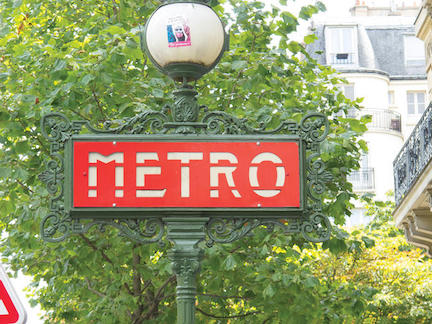 Why Stencil Typography Is Here To Stay
Why Stencil Typography Is Here To Stay
(from fastcodedesign.com; photo by Louise Fili)
DESIGNERS LOUISE FILI AND STEVEN HELLER COMPILE 60 YEARS OF STENCIL TYPE FROM 8 COUNTRIES AND REVEAL WHY THE PRIMITIVE STYLE STILL REIGNS.
The stencil is one of the world’s most primitive printing techniques. It dates back to prehistory, with stencils found in caves, in the art of ancient China and Japan, and in the crafts of indigenous people worldwide. Stencil typefaces are still popular today, whether in the form of new, witty takes on the genre, like Der Weiner Stentzel’s sausage shapes for letterforms, or vintage typefaces redrawn as stencils, like Bodoni or Century.
Stencil Type, a new book by design gurus Steven Heller and Louise Fili, compiles 60 years of this universal typographic style with photos from around the world. It reveals why the stencil has been and remains such a valuable tool for designers and typographers even in the age of digital printing.
Compared to other forms of typesetting, stenciling has always been a low-cost, easy-to-use medium for bold, clearly legible mass communication. This made it ubiquitous in the military and transportation industry (think of the stenciled labels on shipping containers and burlap bags); in populist and rebellious movements (in occupied France, the stenciled letter "V" for victoire became a powerful symbol of resistance; much of the Occupy movement’s poster art is stenciled); and in magazine and poster design, especially in the Bauhaus, Futurist, Constructivist, and Art Deco movements.

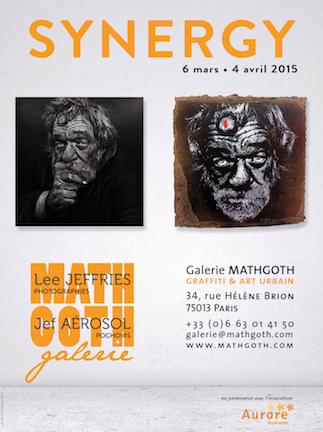 "SYNERGY"
"SYNERGY"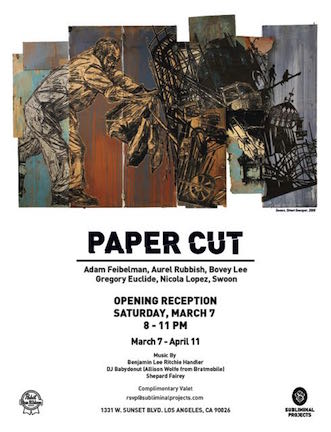
 PERSONS OF INTEREST Opens Project M/7 for Urban Nation (UN) in Berlin with 12 Brooklyn Artists on March 14, 2015, curated by Steven P. Harrington and Jaime Rojo.
PERSONS OF INTEREST Opens Project M/7 for Urban Nation (UN) in Berlin with 12 Brooklyn Artists on March 14, 2015, curated by Steven P. Harrington and Jaime Rojo.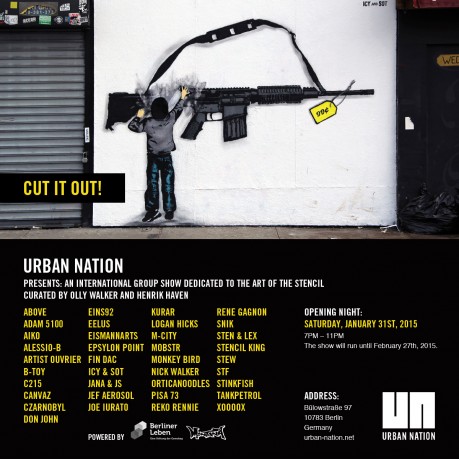
 Shadows will not stop spring from coming! For now, have a few photos of stencil art with the changing climate.
Shadows will not stop spring from coming! For now, have a few photos of stencil art with the changing climate.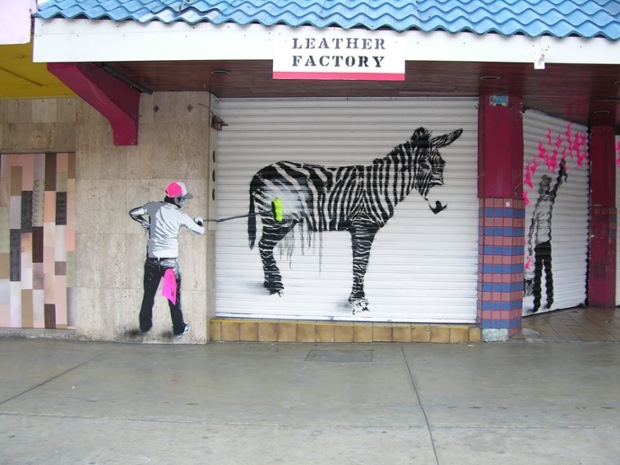 Democracia Real Ya!
Democracia Real Ya!